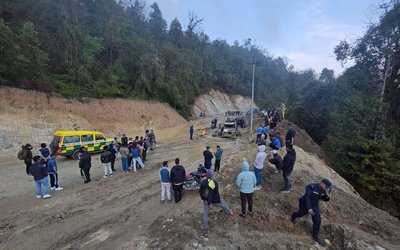
Humanity faces a much larger threat from climate change than previously thought, according to a study unveiled Monday. The study, published in the journal Nature Climate Change, provides one of the most comprehensive assessments yet of how humanity is being impacted by the simultaneous occurrence of multiple climate hazards strengthened by increasing greenhouse gas emissions.
An analysis of thousands of peer-reviewed scientific papers reveals 467 ways in which human health, food, water, economy, infrastructure, and security have been impacted by multiple climatic changes. These changes include warming, drought, heatwaves, wildfires, precipitation, floods, storms, sea level rise and changes in land cover and ocean chemistry, said researchers from the University of Hawaii at Manoa in the US.
Until now, with few exceptions, climate hazards due to greenhouse gas emissions have been studied individually. However, focusing on one or few hazards may mask the impacts of other hazards resulting in incomplete assessments of the consequences of climate change on humanity. “Greenhouse gas emissions pose a broad threat to humanity by simultaneously intensifying many hazards that have proven harmful in the past,” said Camilo Mora, an associate professor at the University of Hawaii.
“Further, we predict that by 2100 the number of hazards occurring concurrently will increase, making it even more difficult for people to cope,” Mora said. The study, co-authored by 23 scientists, analysed vast amounts of big data, with the longtime expertise of veteran climate scientists, including several lead authors on the Intergovernmental Panel on Climate Change (IPCC) reports.
In the year 2100, for instance, New York is projected to face up to four climate hazards, if greenhouse gas emissions are not mitigated, including sea-level rise and extreme precipitation, researchers said. That same year, Sydney and Los Angeles will face three concurrent climate hazards, Mexico City will face four, and the Atlantic coast of Brazil will face five, they said.
Even under strong mitigation scenarios, increasing cumulative exposure to the multitude of climate hazards will impact rich and poor countries alike and especially in tropical coastal areas.
Courtesy: PTI
- India Supported Construction Of Four Schools In Nuwakot
- Mar 19, 2021
- Nepal Denies Permission For Third Phase Trial Of Vaccine Against COVID-19
- Aug 31, 2020
- Messi Can Only Cancel Barcelona Contract If €700 Million Release Clause Is Paid, La Liga Confirms
- Aug 31, 2020
- India To Carry Out Study On Kathmandu-Raksaul Railway
- Aug 28, 2020
- COVID-19: 1,351 Personal Of Nepal Police Infected
- Aug 28, 2020















